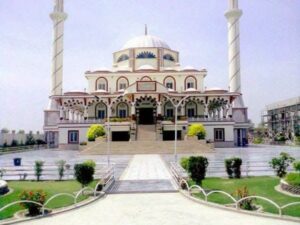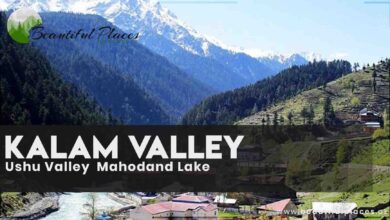Muzaffargarh
It is located in southern Punjab. The closest Metropolitan city is Multan. Most people rely on agriculture for their livelihood.Established in 1985, this region not only bears witness to the dynamic pulse of contemporary life but also echoes with the footprints of empires and the whispers of Sufi saints.
From its fertile plains nourished by the Chenab and Indus rivers to the historical landmarks that stand sentinel, Muzaffargarh beckons explorers to unravel its rich tapestry of history and heritage. In this introduction, we embark on a journey to discover the allure of Muzaffargarh, where time seems to dance between the past and the present.
Key information about Muzaffargarh PK
| Heading | Information |
|---|---|
| Location | Southern Punjab, Pakistan |
| Establishment | Established in 1985 as a separate district |
| Area | Approximately 8,249 square kilometers |
| Population | According to the 2017 census, over 4 million people reside in the district. |
| Geographical Features | Situated between the Chenab and Indus rivers, Muzaffargarh is known for its agricultural plains. |
| Historical Significance | Muzaffargarh has a rich history dating back to ancient times, with influences from various civilizations, including the Indus Valley Civilization and the Mughal Empire. |
| Economy | Predominantly agrarian, with a focus on crops such as cotton, wheat, and sugarcane. The district also has an emerging industrial sector. |
| Major Crops | Cotton, wheat, sugarcane, and rice are among the major crops cultivated in the district. |
| Languages Spoken | Punjabi is the primary language, and Urdu is also widely spoken. |
| Administrative Setup | Divided into several tehsils, including Muzaffargarh, Kot Addu, Alipur, and Jatoi. |
| Educational Institutions | Muzaffargarh has various educational institutions, including degree colleges and schools catering to the educational needs of the local population. |
| Healthcare Facilities | The district has hospitals and healthcare facilities, including Tehsil Headquarter Hospital Muzaffargarh and others, providing medical services to the residents. |
| Transportation | Well-connected by road, with major highways passing through the district. |
| Notable Landmarks | Tomb of Shah Shams Sabzwari, a revered Sufi saint. Muzaffargarh Fort, a historical fort that reflects the region’s rich history. |
| Local Culture | Rich cultural heritage with influences from Sufi traditions, reflected in local festivals and celebrations. The district is known for traditional music and folk arts. |
| Industries | Agriculture is the primary industry, and there is a growing presence of industries, including textiles and agribusiness. |
| Natural Resources | Rich in fertile agricultural land, with the rivers providing water resources for irrigation. |
| Tourist Attractions | While not widely recognized as a tourist destination, Muzaffargarh offers historical and cultural sites for those interested in exploring the region’s heritage. |
Famous Historical Place
Sakina-Tu-Sughra Mosque
A Pakistani Cardiologist based in the United States Dr. Ismail Bukhari built this mosque in Kotla Raham Ali Shah town which is 11 km from Jatoi and 74 km from Muzaffar Garh.
Before that, there was a madrassa and a small mosque. Maulana Obaid Ullah Sindhi got his early education in this Madrassa. Dr. Ismail Bukhari renovated this mosque and allocated an area of 56 canals. He analyzed different architectural styles of the mosques in the World and selected Turkey’s architectural style for this mosque.
The map of this three-floor mosque was designed by the renowned Turk Architect engineer Najeeb. The raw material was imported from Turkey. The chandeliers in this mosque were designed by the same company which designed the chandeliers of masjid -e- Nabi ﷺ.

It was completed in a short duration of sixteen months. It gives a pleasant feeling when you enter this mosque.
The sacred names Allah and Muhammad are written with grass. The white marble net in the inner part of the mosque is a fine example of Mughal and Multani art.
The main door of this mosque resembles the front gate of Masjid-e- Nabiﷺ. The height of the mosque is 80 feet and the height of the two minarets is 186 feet. It consists of 23 small domes and teak wood is used in its doors.
A madrassa is connected to this mosque and more than 400 students are getting religious education there.
Transport is available from Multan to Jatoi. People can visit Kotla Raham Ali Shah through local transport.
Kot Addu Fort
Located near Kot Addu, this historic fort dates back to the Mughal era. It stands as a testament to the architectural grandeur of that period and offers a glimpse into the region’s rich history.
Shrine of Hazrat Bahauddin Zakariya
Situated in the city of Muzaffargarh, this shrine is dedicated to Hazrat Bahauddin Zakariya, a prominent Sufi saint. It holds religious and historical significance, attracting devotees and visitors alike.
Alipur Fort
Alipur Fort, also known as Qaisr-e-Nasrullah, is an imposing structure in the city of Alipur. Built during the British colonial period, the fort reflects a blend of British and Mughal architectural styles.
Fort Qasim Bagh
This historic fort is located in Multan but is often associated with Muzaffargarh due to its proximity. Built by the Mughal Emperor Akbar, it served as a military outpost and is now a popular public park.
Ruins of Moenjodaro
While not directly in Muzaffargarh, the district has connections to the ancient Indus Valley Civilization, and remnants of this civilization, including Moenjodaro, can be explored in the broader region.
Kot Sultan
Kot Sultan, a town in Muzaffargarh District, is known for its historical and cultural significance. The town has archaeological sites that showcase the ancient history of the region.
Kot Mithan
This historical town is known for its association with the Sufi saint, Khawaja Ghulam Farid. The shrine of Khawaja Ghulam Farid is a revered place for spiritual seekers and tourists.
Nawab’s Fort, Jatoi
Jatoi, a tehsil in Muzaffargarh District, is home to Nawab’s Fort. The fort carries historical significance and is a reflection of the architectural styles prevalent during the rule of nawabs in the region.
Schools
- Govt. High School Muzaffargarh
- The Educators School, Muzaffargarh Campus
- Bloomfield Hall School, Muzaffargarh
Colleges
- Govt. Degree College Muzaffargarh
- Superior College Muzaffargarh Campus
- Punjab College Muzaffargarh
Hospitals
- District Headquarters (DHQ) Hospital Muzaffargarh
- Akram Hospital Muzaffargarh
- Shifa International Hospital Muzaffargarh
Restaurants
- Food Street Muzaffargarh
- Green Hut Restaurant
- Al-Noor Fast Food
Frequently Asked Questions
Q: What is the significance of Muzaffargarh District in Punjab, Pakistan?
A: Muzaffargarh District holds historical and cultural importance in Punjab, known for its agricultural prowess, strategic location along the Chenab River, and a rich tapestry of diverse communities.
Q: How did Muzaffargarh get its name?
A: The district is named after Nawab Muzaffar Khan, a prominent figure during the Sikh rule in the early 19th century. His contributions to the development of the area led to the district being named in his honor.
Q: What is the geographical location of Muzaffargarh?
A: Muzaffargarh is situated along the banks of the Chenab River, making it a vital part of the fertile plains of the Indus River in Punjab, Pakistan.
Q: Can you provide a brief overview of Muzaffargarh’s historical background?
A: Muzaffargarh has a rich history dating back to ancient times, with evidence of habitation during the Indus Valley Civilization. It became part of various empires, including the Delhi Sultanate and the Mughal Empire, before witnessing the influence of Nawab Muzaffar Khan during the Sikh rule.
Q: How did British colonialism impact Muzaffargarh?
A: The British colonial period marked significant developments in Muzaffargarh, with the introduction of modern irrigation systems that transformed the district into a major agricultural center.
Q: What is the mainstay of Muzaffargarh’s economy?
A: Agriculture is the backbone of Muzaffargarh’s economy. The district is renowned for the production of crops such as cotton, wheat, rice, and sugarcane, owing to its fertile soil and extensive canal system.
Q: What cultural heritage sites can be found in Muzaffargarh?
A: Muzaffargarh boasts numerous cultural heritage sites, including forts, shrines, and ancient settlements. These architectural marvels reflect the diverse influences that have shaped the district over the centuries.
Q: What challenges does Muzaffargarh face today?
A: Muzaffargarh faces challenges such as water scarcity, inadequate infrastructure, and socio-economic disparities. Efforts are underway to address these issues and ensure sustainable growth for the district.
Q: How has Muzaffargarh evolved post-independence in Pakistan?
A: After the partition of India in 1947, Muzaffargarh became part of Pakistan. The region faced challenges associated with population migration but gradually stabilized, continuing its agricultural prominence within the country.
Q: What opportunities are being explored for the future development of Muzaffargarh?
A: Efforts are being made to address challenges and unlock the full potential of Muzaffargarh. This includes initiatives to improve infrastructure, address water scarcity, and promote socio-economic development for the well-being of the community.
Wind Up Lines
Muzaffargarh District, with its storied past and vibrant present, stands as a testament to the resilience of its people and the richness of its cultural heritage. From ancient civilizations to the challenges of the modern era, Muzaffargarh continues to evolve, contributing to the tapestry of Punjab’s history and progress. As the district looks towards the future, it remains a vital and dynamic part of Pakistan’s cultural and economic landscape.




